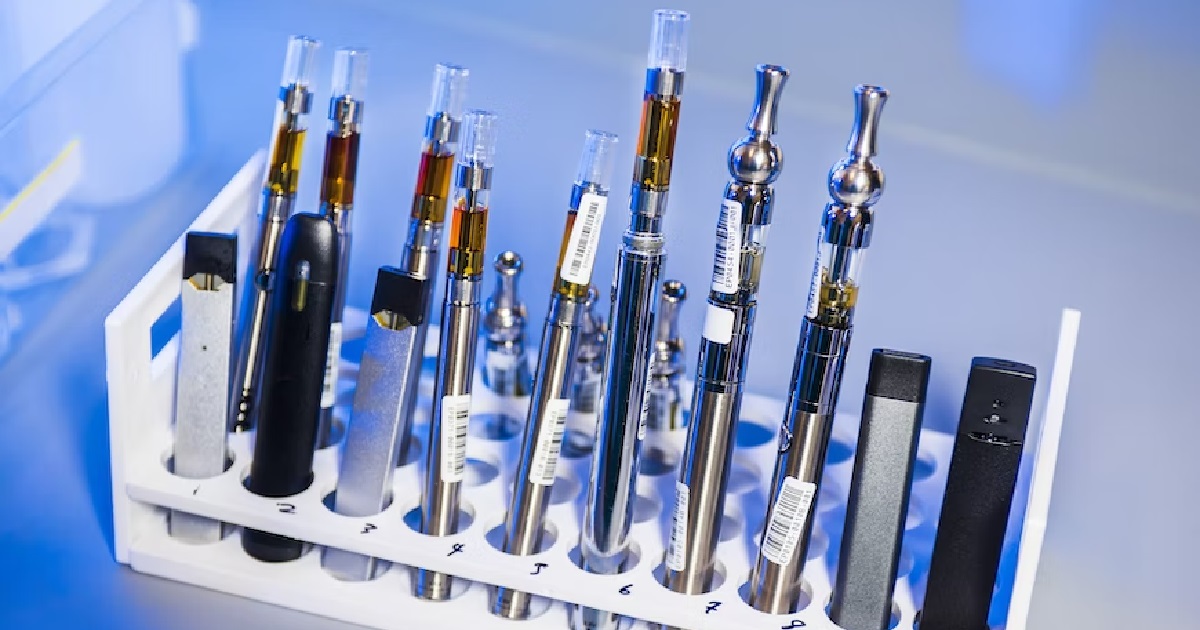
Health Technology, AI
Article | July 18, 2023
Introduction
Healthcare supply chains are highly regulated, high-margin domains with stringent quality criteria, such as the demand for cold-chain storage and shipping. In addition, due to a lack of adequate understanding of the complicated rules governing healthcare products and services, medical aid providers are encountering inefficiencies while outsourcing capabilities to logistics service providers (LSPs).
In today's value-based care paradigm, healthcare leaders are tasked with improving patient outcomes while decreasing costs. With surging globalization, the growing cross-border nature of several medical products, and rising complexities in healthcare logistics, the need for building a robust supply chain is rapidly increasing across the healthcare industry.
Key Ways to Enhance Healthcare Supply Chain
A resilient supply chain plays a vital role in managing supplies, procuring resources, and shipping medical goods, among others, which assists in improving patient outcomes, enhancing service efficiency, and declining costs. Healthcare organizations are aiming to strengthen their supply chain to enjoy these benefits such as increased reimbursement, improved quality control, reduced inventory and overhead costs, and better collaboration with suppliers.
Here are some of the key ways to assist medical aid providers in building a strong healthcare supply chain
Develop effective inventory management
Manufacturers frequently encounter difficulties with timely inventory movement through their supply chains. Revenue is lost, and profit margins are harmed when products expire because they are not used adequately. This is why it is crucial to effectively manage the inventory process.
Hence, healthcare executives should deploy a high-quality equipment management system and increase collaboration between organizations, suppliers, and manufacturers to assist them in controlling inventory levels and effective inventory management.
Use technology and analytics to make operations run smoother
When it comes to supply chain management automation, the healthcare sector continues to lag behind other sectors. This is true for both the enterprise resource planning (ERP) functions and data analytics use for making decisions about forecasting and product choice.
Healthcare executives should make use of efficient technologies, such as solid analytics, in order to successfully improve a supply chain. Implementing data analytics and automation tools can assist in making healthcare supply chain management more efficient and effortless.
Widen and strengthen the supplier base
One of the most effective ways to build a robust healthcare supply chain is by increasing the number of suppliers and enhancing supplier base management.
Manufacturers and purchasers should abandon using single-or limited-source supply chains for raw materials and finished goods. This will assist healthcare companies in expanding their network of raw material suppliers and helps in careful consideration of which suppliers to use for procuring which resources.
Improve order accuracy and order cycle times to lower costs
Healthcare providers sometimes encounter a large number of errors during the ordering process. When incorrect products are ordered, the facilities face losses in revenue and are sometimes unable to deliver specific services due to the unavailability of products they need. Errors in placing orders can also result in medication errors. This can lead to a decrease in patient outcomes and negatively impact the company’s revenue growth.
To reduce the frequency of errors, these providers should deploy a computerized provider entry system. This will help improve order accuracy, increase supply chain efficiencies, and shorten turnaround times in healthcare ordering processes.
Consistently track and calibrate performance
Regardless of the size of the healthcare facility, it is of great importance for medical aid providers to carefully track and calibrate their performance frequently or on a specified timeline. This enables clinically integrated supply chains in healthcare to use key performance indicators (KPIs) to compare outcomes in terms of cost and quality and make decisions about products.
What’s Next?
The rising integration of novel disruptive technologies such as data analytics, the internet of things, artificial intelligence, and blockchain into healthcare supply chain management software is facilitating smooth operations, transparency, growth, and security across the life-science industry.
With a growing need for enhancing supply chains, healthcare providers are focusing on deploying advanced supply chain management solutions, such as healthcare logistics software, to strengthen their supply chains. As the trend continues to grow, the sales of healthcare supply chain management software and services are anticipated to rise from the US$2.2 billion registered in 2020 to US$3.3 billion by 2025.
Read More

Health Technology
Article | September 12, 2023
Introduction
Within the last two years, the healthcare industry saw an influx in patient care as COVID-19 swept through communities across the globe. The widespread shortage of patient care tools, personal protective equipment (PPE), and medical technology amid the pandemic led to an exponential rise in health expenditures and demand for essential supplies.
In response to the medical demand-supply imbalance, the governments of numerous countries increased their medical care expenditures to counter the challenges of patient care equipment shortages. For instance, according to the National Healthcare Expenditure Data, federal government spending on healthcare and medical care grew by 36% in 2020 and is estimated to reach US$ 6.2 trillion by 2028 in the U.S.
Despite the rise in medical budget allocations, medical facilities are still facing difficulties obtaining enough supplies with the growing prevalence of numerous chronic, infectious, and hereditary diseases. As a result, organizations are focusing on deploying innovative solutions, such as healthcare supply chain management software, to keep track of inventory, procurement, logistics, and others and strengthen their supply chain.
Healthcare Supply Chain Management Solutions: Key Types
Healthcare systems, hospitals, and other patient care sites require a broad array of supplies to perform diagnosis and treatment, from masks and gloves to catheters and implants. Inadequate supplies coupled with inflation is making supply chain management a crucial but complex component in providing optimal patient care across the healthcare industry. This has shed more light on the role of supply chain management in saving lives.
Effective supply chains help various regulatory agencies, including medical goods manufacturers and insurance companies, deliver essential supplies, resources, technologies, and other patient care goods to healthcare establishments. Supply chain management solutions are thus garnering massive traction among healthcare organizations for simplifying and automating manual supply chain and logistics operations.
Let’s have a look at the types of supply chain management software that assist healthcare organizations to optimize their supply chain processes
Inventory Management Software
Efficient medical inventory management is critical for the running of healthcare organizations. The software provides real-time inventory tracking, assisting organizations in closely monitoring inventory changes, avoiding shortages of both low-value and high-use patient care items, decreasing the wait time for access to medical supplies, and reducing the chances of late delivery.
Order Management Software
It is crucial for healthcare establishments to have an estimate of the demand and supply of goods to prevent shortages. Order management software enables these organizations to coordinate supply chain demand planning and forecasting. It also assists in streamlining warehouse operations, resulting in faster and more accurate order placement.
Sourcing and Procurement Software
By tapping into the power of sourcing and procurement solutions, healthcare organizations can develop robust sourcing processes and automate, streamline, and optimize their entire procurement processes. The software also assists establishments in improving their supply inventory levels, identifying the best supplier, and reducing their overall purchasing cost.
Shipping and Tracking Software
Shipping and tracking software assist in the planning and execution of the physical movement of goods. These solutions are primarily used by medical equipment manufacturers and suppliers during the delivery or relocation of patient care goods. The integration of these solutions enables organizations to track and manage numerous batches of goods in transit.
The Bottom Line
Growing competition, healthcare regulations, shipping costs, and increased logistics requirements from medical institutions have complicated the supply chain management processes. As a result, life-science companies are investing in cutting-edge supply chain management solutions to reduce numerous errors, improve logistics, and eliminate unnecessary costs spent to fix them.
Thus, several companies are now emphasizing the incorporation of cutting-edge technologies, including artificial intelligence and data analytics, into healthcare supply chain management software to reap benefits such as process automation, streamlined inventory, reduced waste, improved decision-making, and lower labor, supply, and operational costs.
Read More

Digital Healthcare
Article | November 29, 2023
Smoking has a lot of consequences to one’s health. It can lead to cancer, heart disease, and chronic obstructive pulmonary disease—all of which are chronic diseases. This is part of the reason why the Health and Human Services agency reports that 70% of adult smokers want to quit. As a medical provider, adults looking to stop smoking will come to you for advice and treatment. One alternative smoking product you might want to recommend is an e-cigarette, given their prevalence in recent years.
In this article, let’s take a deeper look at whether e-cigarettes’ should be recommended for smoking cessation and what other treatment options to endorse to patients.
Are e-cigarettes approved for smoking cessation?
Electronic cigarettes, more commonly known as e-cigarettes, are devices that vaporize nicotine-based liquid to be inhaled by its user. It almost replicates the experience of smoking a cigarette due to the device’s shape and the vapor it produces. However, the FDA has yet to approve e-cigarettes for smoking cessation because there is currently limited research on their effectiveness, benefits, and risks for the human body.
Additionally, scientists at the University of California found harmful metals in the vapor from tank-style e-cigarettes. These e-cigarettes are equipped with high-power batteries and atomizers to store more liquid. These result in high concentrations of metals like iron, lead, and nickel in the vapor. Exposure to and inhaling metallic particles may impair lung function and cause chronic respiratory diseases. As such, medical providers should not recommend e-cigarettes for smoking cessation.
What can medical providers recommend for smoking cessation?
Smoking cessation medication
Presently, two FDA-approved prescription medicines for smoking cessation are Bupropion and Varenicline. Bupropion is an antidepressant that decreases tobacco cravings and withdrawal symptoms. It does this by increasing the brain chemicals dopamine and noradrenaline. This comes in a pill and can be used alongside other smoking cessation aids.
Varenicline also reduces cravings and nicotine withdrawal symptoms. It blocks nicotine receptors in the brain, decreasing the amount of enjoyment one gets from smoking. One thing to note about this is that it will take several days for Varenicline's effects to take place. Therefore, it's best to prescribe these pills 1-2 weeks before the patient quits smoking. Like Bupropion, Varenicline may be used simultaneously with other quit-smoking products.
Nicotine Replacement Therapy
Nicotine replacement therapy (NRT) is a treatment involving nicotine consumption at gradually decreasing levels. This reduces the patient’s desire to smoke without them having to quit cold turkey. NRT involves using nicotine alternatives that don’t produce smoke, such as nicotine pouches and nicotine gum.
Nicotine pouches are oral products containing ingredients like nicotine, flavoring, and plant-based fibers. These are placed between the lip and gum, where nicotine is absorbed into the bloodstream. Different variations have different strengths. On! pouches come in different strengths: 2mg, 4mg, and 8mg. Patients may start from 8mg variants and gradually decrease this dosage as their NRT progresses. Pouches also come in a wide range of flavors—including citrus, mint, and berry—to entice users.
Meanwhile, nicotine gum is chewing gum that contains nicotine. It is chewed a few times before being parked between the gums and cheek for nicotine absorption. The nicotine gums by Lucy are a significantly better alternative for tobacco users. Like pouches, this gum comes in several flavors, such as cinnamon, mango, and wintergreen, and different strengths ranging from 2mg to 6mg.
Counseling
The recommendations mentioned above—medication and NRT—are more effective when coupled with counseling. A Primary Care Respiratory Medicine study revealed that successful smoking cessation is best attained through pharmacological treatment and counseling. Sessions typically involve a patient meeting with a counselor and they discuss their smoking habits, possible causes, and how to mitigate them. Medical providers should include counseling in addition to medication and NRT.
E-cigarettes have yet to be approved by the FDA as smoking cessation aids. For now, medical providers should provide medication, NRT, and counseling to patients who want to quit smoking.
Read More

Health Technology
Article | July 5, 2023
Your patients have grown to trust your expertise and recommendations in matters regarding their healthcare. As the sector transitions into a more digital playing field, uninterrupted network connectivity is more than just a bonus; it’s a necessity.
While there are many different challenges to completely integrating your practice into the digital world, internet outages are the costliest. Downtime can be caused by various factors, which can compromise patient safety, the faith your team instills in you, and your practice’s reputation and revenue. However, investing in the means to maintain a resilient network lets you maximize your network uptime to optimize resources.
We'll look at four different strategies and their benefits for your infrastructure so you can focus on what you do best: providing healthcare excellence to your patients.
Strengthening Network Infrastructure
The traditional way of doing things may be great for your remedies and techniques. Still, with a growing number of patients and their contextually relevant demands, your network needs to be able to accommodate many different booking requests, increase user activity on your server, and store sensitive patient information.
High-speed internet connections enhance your network performance and let you, your team, and your patients make the most of your uninterrupted uptime. Fiber-optic networks, when combined with load balancing and proper segmentation, can diffuse and direct network traffic efficiency and prevent congestion, which prevents downtime due to overload.
Implementing Network Monitoring and Management Tools
Much like your patients visit your practice to ensure everything is all right with the current state of their health, your network must also receive the same treatment. Identifying and pre-emptively resolving potential issues and vulnerabilities will prevent much more destructive or expensive problems from occurring.
Use real-time tools to monitor your bandwidth usage and gain visibility of potential bottlenecks. Tools that offer risk monitoring deliver alerts about critical events that pose a threat to your business continuity. Your IT team will be better equipped to troubleshoot issues promptly and optimize performance.
Conducting Regular Network Assessments and Audits
Once you have the proper monitoring tools to manage your network topology better, proactive troubleshooting is a great way to spot-check whether your current solution is working as it should. A network audit is much like proactive troubleshooting; you are looking to see if anything could harm the overall system and catch it before it can develop.
When auditing a network, the primary focus should be security measures. If patient and confidential data is not secure, the smooth operations of your business are the least of your worries. When conducting an audit, consulting with a network service provider will help identify issues with your protocols, data encryption, and firewall configuration.
Establishing Redundancy and Disaster Recovery Plans
Backing up private and confidential data is crucial to ensuring that sensitive information is not lost or exposed. Minimizing network downtime can often be achieved by having backup systems that will keep running in the event of an attack or outage. For example, a dedicated Cloud Access Network, power supplies, and switches will go a long way.
When creating an internet contingency plan, outline steps and protocols with your team that you will take in the event of a complete failure, including things such as brand reputation management, customer service, and data loss prevention.
Looking Forward
As the lines between in-person and digital are blurred, navigating the complexities of implementing a robust network is paramount to your business.
Strengthening your infrastructure, integrating redundant systems, and conducting regular audits and assessments with the proper monitoring and management tools will help you maximize uptime usage and minimize network downtime.
Although overwhelming, working with a reputable network service provider can help you embrace your network topology to remain competitive.
Read More